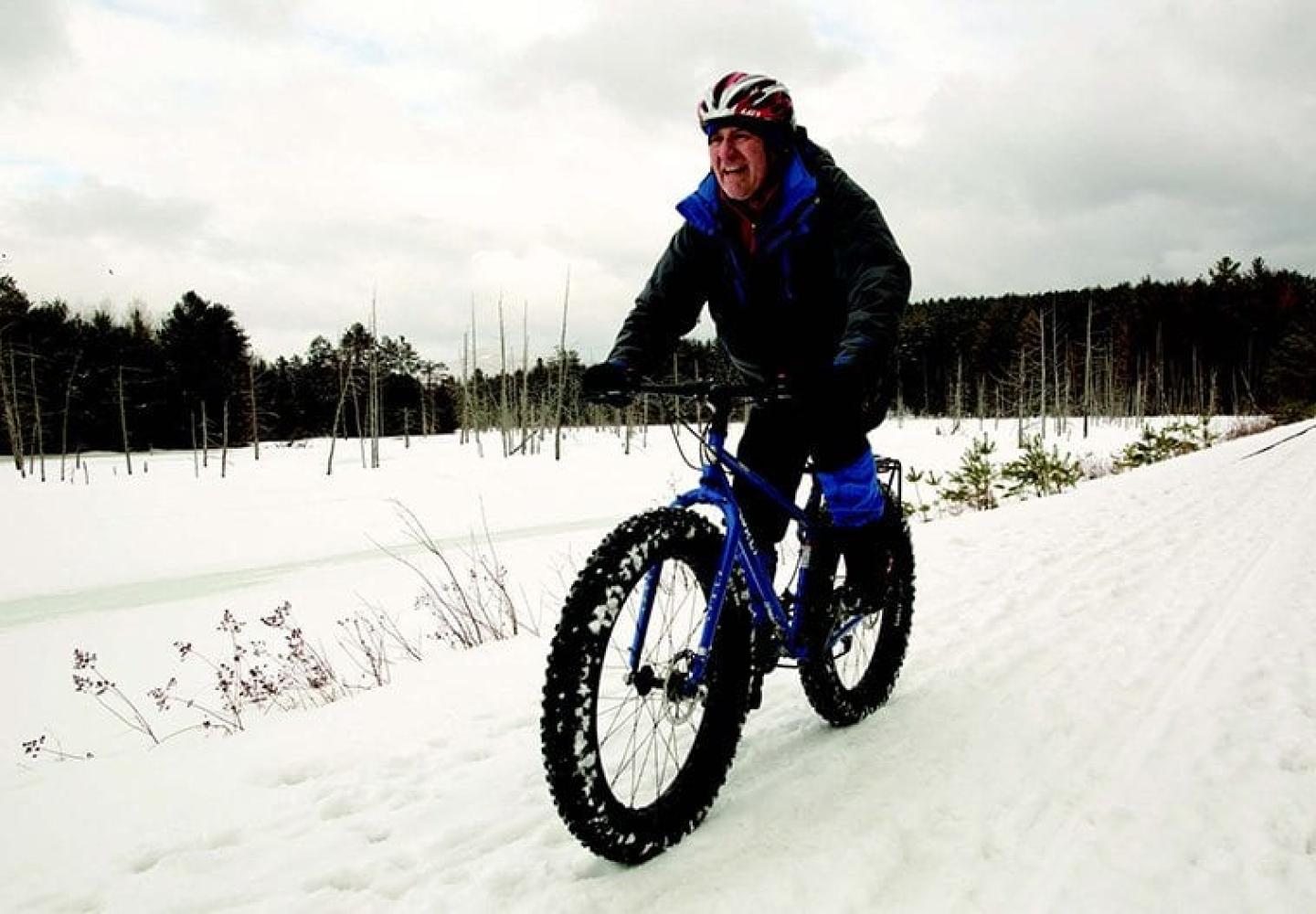Adirondack Rail Trail Now Open for Fat Bikes
Have you been itching to ride the Adirondack Rail Trail? Well, grab your fat bike and jump on it!
By Phil Brown
The 34-mile Adirondack Rail Trail is open this winter for snowmobiling, cross-country skiing, snowshoeing, and, yes, fat-tire biking.
The state Department of Transportation had closed the rail corridor this past summer and fall while its crews removed tracks and reconstructed road crossings. Because that work is now finished, DOT is transferring management of the corridor to the state Department of Environmental Conservation.
DOT had installed signs barring the public from using the corridor, which stretches from Lake Placid to Tupper Lake. Those signs will be removed to allow winter recreation, according to a DEC spokesperson.
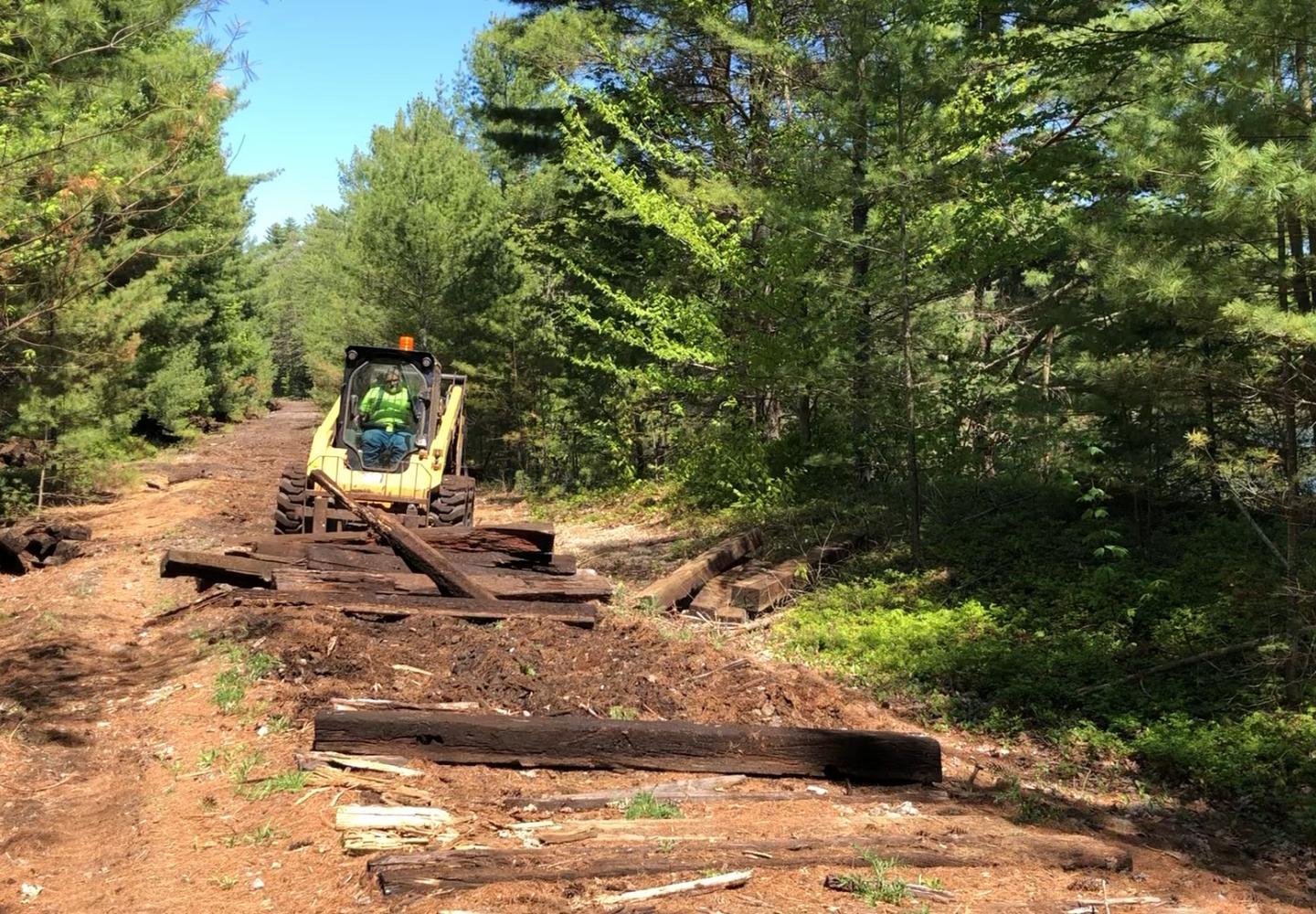
With the tracks gone, the rail corridor is likely to draw more fat bikers this winter than in years past, said Josh Wilson, executive director of the Barkeater Trails Alliance (BETA), which maintains bike and ski trails in the region.
“Generally speaking, all fat bikers are just looking for good riding conditions,” Wilson said. “It’s more enjoyable to ride on hard-packed snow, whether it’s been packed by a groomer, a snowmobile, or by snowshoers and other trail users. The rail corridor can consistently provide that experience.”
One fat biker looking forward to riding the rail corridor this winter is John Dimon, owner of the Human Power Planet Earth bike shop in Saranac Lake.
“Now that the ties and rails are gone, fat bikers will be out on the corridor earlier and later in the winter season than ever before,” Dimon said. “I and others used it a lot in the past and hope to increase riding days this year.”
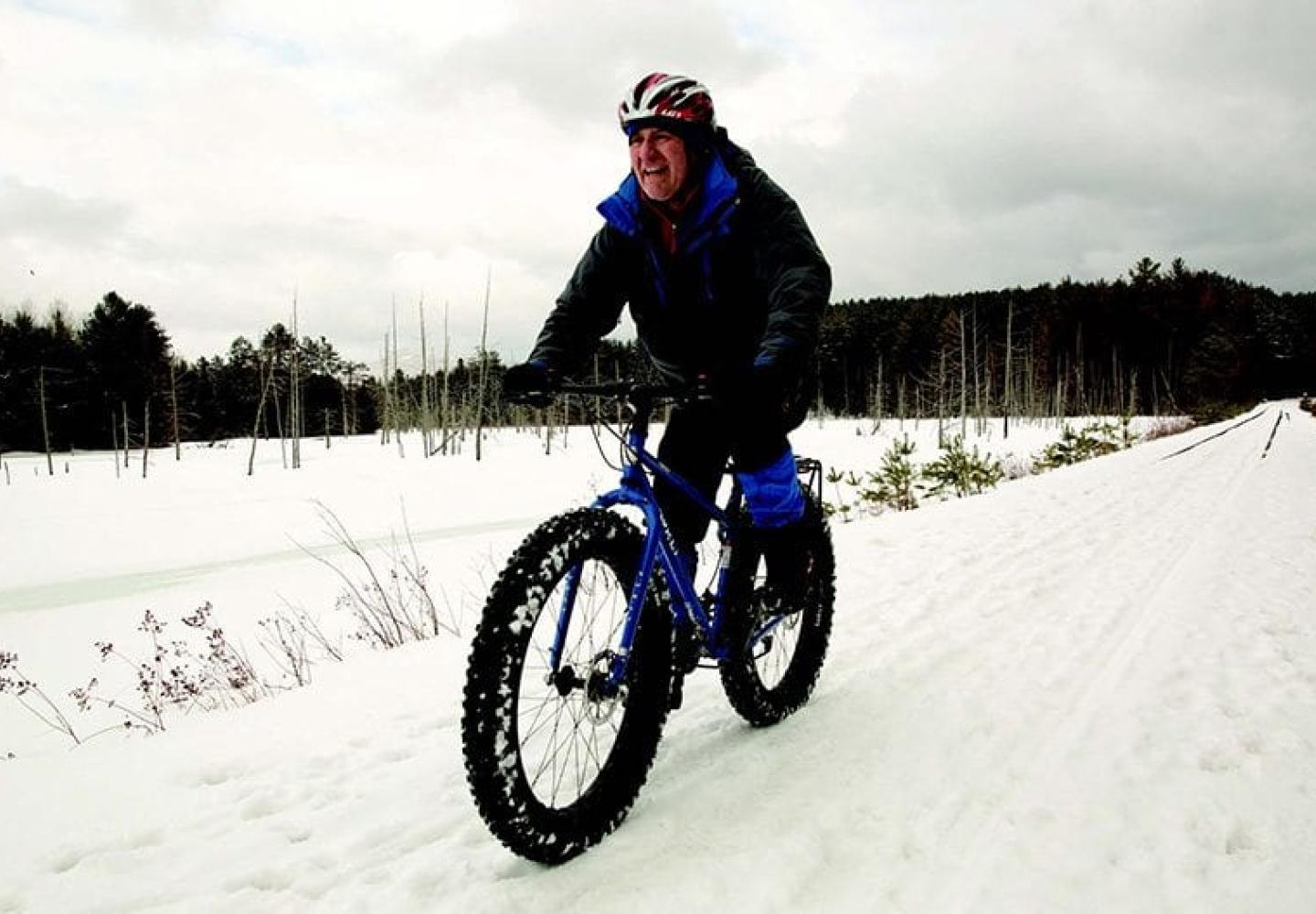
Dimon advises bikers to look and listen for snowmobiles on the corridor and pull over to allow the machines to pass. “Smile and wave. We are all in this together,” he said. “I hope this first rail-corridor winter sees lots of friendly multi-use.”
The state speed limit for snowmobiles is 55 mph. In the rail corridor, they will be limited to 15 mph within villages. DEC may also impose speed limits in other parts of the corridor.
It’s unclear how public access will be managed after the snow melts and DEC begins converting the rail bed into an all-season multi-use recreation trail. That issue will be addressed in an interim management plan, which has yet to be released.
The department will work on the trail in sections, laying down a stone-dust surface that should be suitable for most road bikes. The first section, from Lake Placid to Saranac Lake, should be completed in 2023. The entire trail is expected to be finished in 2025.
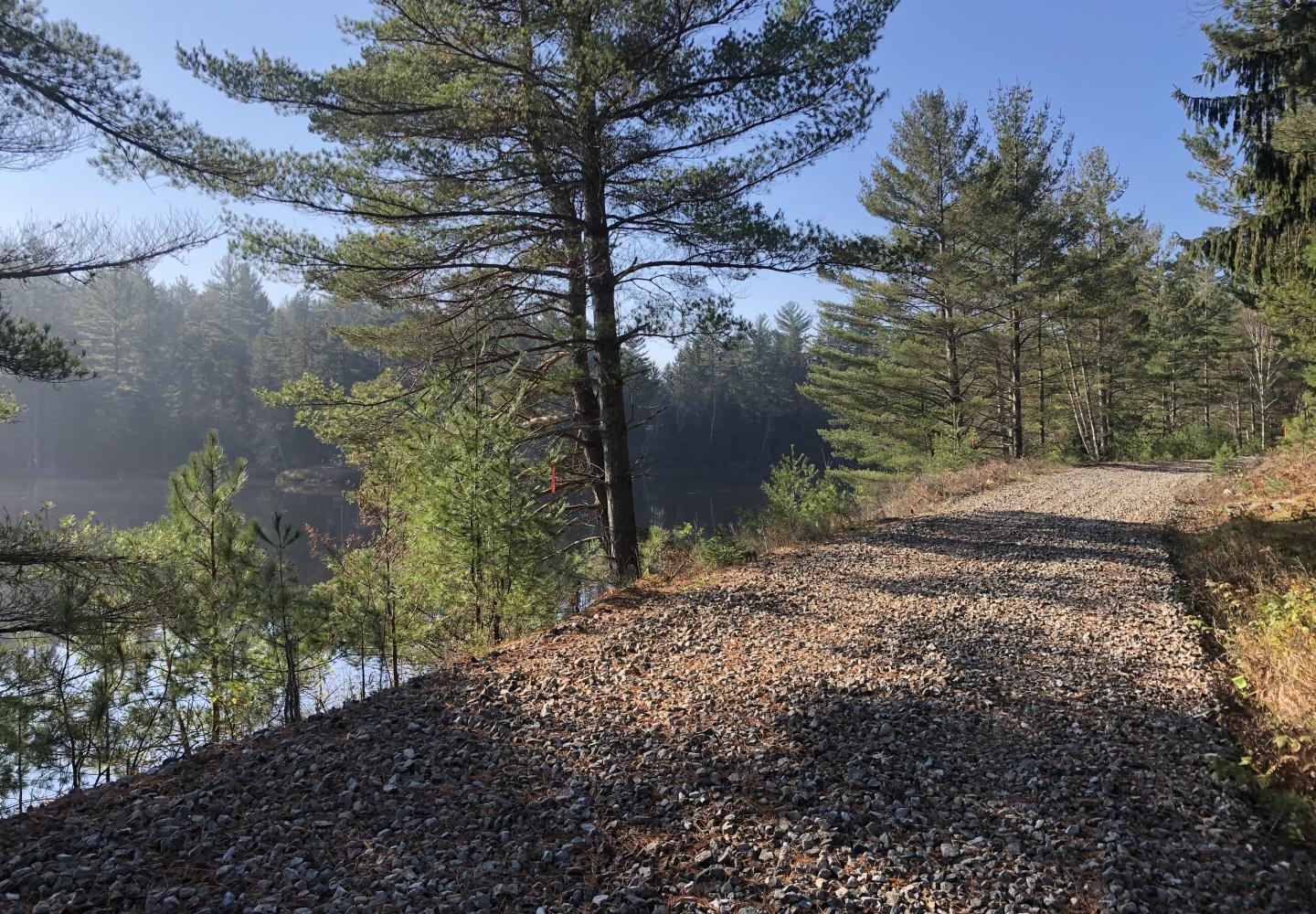
Before DOT erected its signs, people had ridden the gravel bed on mountain bikes. As one of those riders, I can attest that it is a bumpy experience. However, I discovered a dirt-and-cinder stretch just north of Tupper Lake that is smooth enough for a gravel bike or hybrid. You can read the story about my ride here: https://bit.ly/3CVHqQO
The rail trail will include such amenities as kiosks, bike racks, rest areas, and educational signs. These will be added after the entire trail is surfaced and open for use, according to the DEC spokesperson.
Generally, e-bikes are not allowed in the Adirondack Forest Preserve. However, class 1 pedal-assist e-bikes will be allowed on the rail trail. The pedal-assist function on these bikes cuts out at 20 mph. More powerful e-bikes will not be allowed on the trail.
Incidentally, the November/December issue of the Adirondack Explorer contains two articles on the rail trail. Gillian Scott describes her ride along the full length of the corridor (before DOT’s signs went up). In the second article, Michael Virtanen writes about the economic benefits created by Great Allegheny Passage rail trail in Pennsylvania and Maryland and discusses the economic potential of the Adirondack Rail Trail.
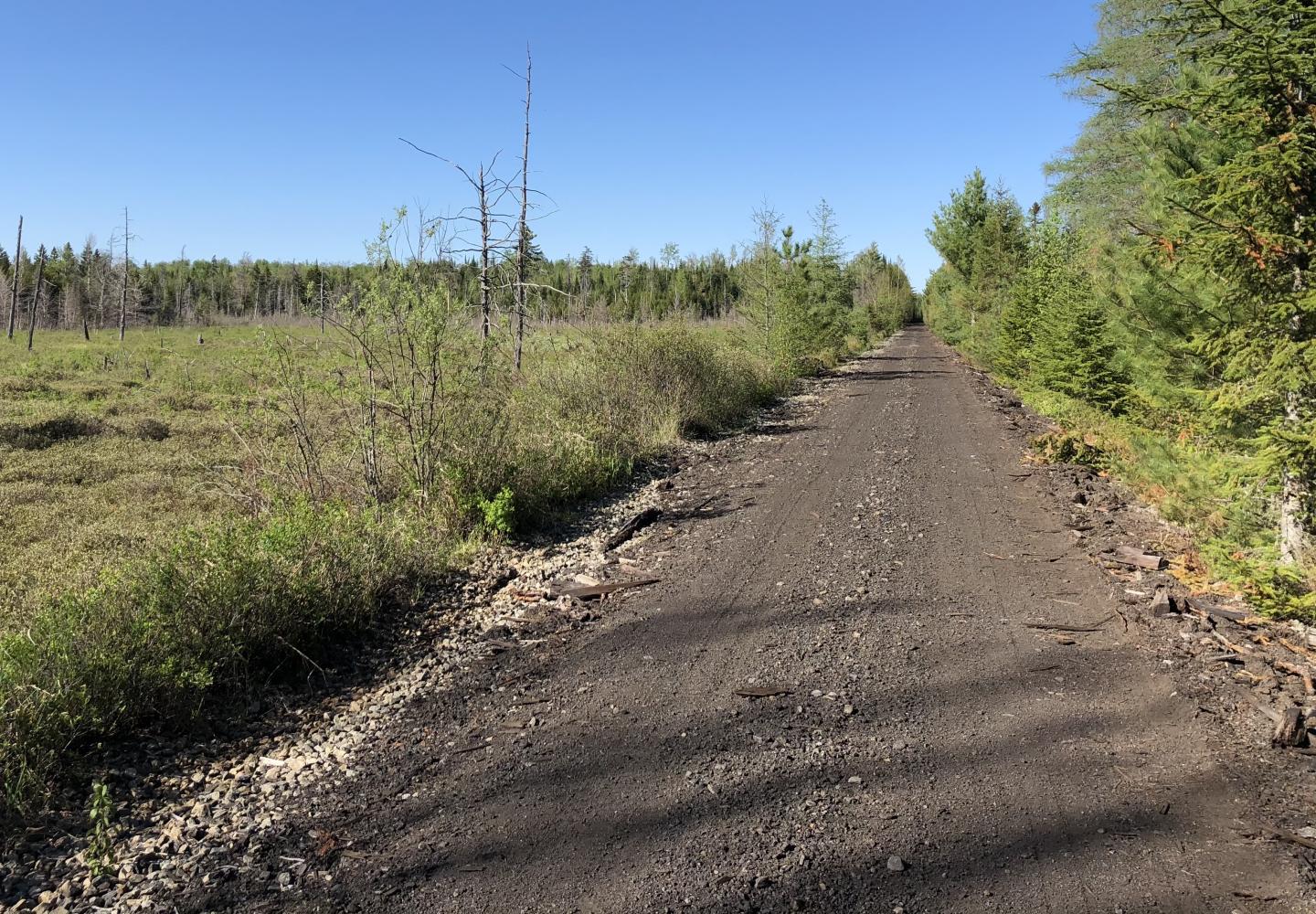
Although the tracks from Lake Placid to Tupper Lake have been removed, the state fixed up tracks south of Tupper. This will enable tourist trains to run north from Utica to Tupper Lake. Virtanen reports that the train to Tupper could begin running next year. Critics question the viability of rail service to Tupper and argue that the region would be better off if the rail trail were extended all the way to the Old Forge area.
Interested in the rail trail? Subscribe (or stay subscribed) to this newsletter for future updates.

